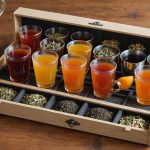Ensuring food safety in your kitchen is more important than ever. UV-light sanitation devices offer an innovative solution to minimize harmful bacteria and viruses, enhancing both safety and diet quality. By incorporating these technologies, you not only protect your family but also elevate your cooking experience. Discover how UV-light can transform your kitchen practices and promote healthier living in a convenient way. Embrace the change for a cleaner, safer kitchen environment today.
Understanding UV-Light Sanitation
Exploring the technology behind UV-light sanitation and its impact on food safety.
This might interest you : Exploring How Kitchen Mat Texture and Color Enhance Comfort and Reduce Fatigue While Cooking
Overview of UV-Light Sanitation Technology
UV-light sanitation is an advanced method used in various industries, including food safety, to eliminate harmful microorganisms. This technology primarily uses UV-C light, a type of ultraviolet light with a wavelength between 200-280 nanometers, which is effective in disrupting the DNA of bacteria and viruses, thus rendering them inactive. Unlike traditional sanitation methods, UV-light does not require chemicals, making it an environmentally friendly option.
How UV-C Light Kills Bacteria and Viruses
The mechanism of UV-C light involves penetrating the cell walls of microorganisms. This disrupts their genetic material, preventing replication and effectively killing them. The precision of this method ensures high efficacy, making it a preferred choice in maintaining food safety technology.
Also read : Discover the Ideal Tea Organizer for Embracing Slimming Herbal Teas!
Differences Between UV-Light Sanitation and Traditional Methods
- Chemical-Free: UV-light does not rely on chemical agents, reducing potential residues on food products.
- Speed: UV-light sanitation is faster, often requiring mere seconds to be effective.
- No Heat: Unlike pasteurization, UV-light does not involve heat, preserving the nutritional quality of food.
By leveraging UV-light sanitation, industries can enhance safety protocols while minimizing environmental impact, showcasing the potential of this innovative food safety technology.
Benefits of UV-Light Sanitation for Food Safety
Exploring the advantages of UV sanitation in enhancing food safety protocols.
Reduction of Foodborne Illnesses
UV-light sanitation offers significant benefits in food safety enhancement by effectively reducing foodborne illnesses. This method inactivates pathogens on surfaces and food, thereby minimizing the risk of contamination. By targeting harmful microorganisms, UV sanitation helps ensure that food products are safer for consumption, contributing to public health.
Inactivation of Pathogens
The inactivation of pathogens is a key aspect of UV-light sanitation. This process involves disrupting the DNA of bacteria and viruses, preventing them from multiplying. As a result, the risk of outbreaks is significantly lowered. UV sanitation is particularly effective against a wide range of pathogens, making it a versatile tool in the food industry.
Increased Shelf Life of Food Products
One of the notable benefits of UV sanitation is the increased shelf life of food products. By reducing microbial load, UV-light helps maintain the freshness and quality of food for longer periods. This not only reduces waste but also enhances consumer satisfaction.
- Chemical-Free: No residue left on food.
- Fast: Works in seconds.
- Environmentally Friendly: Reduces chemical usage.
Incorporating UV sanitation into food safety protocols can lead to healthier food systems and more sustainable practices.
Impact on Diet Quality
Exploring the intersection of food safety and nutrition through UV sanitation.
Enhancing Freshness and Nutritional Value
UV sanitation plays a crucial role in preserving the freshness and nutritional value of food. By effectively reducing microbial load, it prevents spoilage, ensuring that food retains its essential nutrients longer. This process is particularly important for maintaining the quality of perishable items, which are prone to rapid deterioration.
Prevention of Cross-Contamination
In food preparation, preventing cross-contamination is vital for both food safety and nutrition. UV sanitation acts as a barrier, inactivating pathogens that could transfer between surfaces and ingredients. This method supports a cleaner preparation environment, safeguarding the integrity of various food types, including organic options.
Maintaining Organic Food Integrity
For those committed to organic diets, UV sanitation is a game-changer. It upholds the integrity of organic foods by eliminating the need for chemical preservatives. This ensures that the nutritional benefits of organic produce are preserved without compromising safety.
- Chemical-Free: No impact on organic status.
- Quick and Effective: Immediate pathogen inactivation.
- Preserves Nutrients: Maintains food quality.
By integrating UV sanitation, consumers can enjoy fresher, safer foods while supporting sustainable practices that enhance overall diet quality.
Popular UV-Light Sanitation Devices
Examining the top choices in the market for effective kitchen sanitation.
Overview of Leading Brands and Models
In the realm of UV sanitation devices, several brands have established themselves as leaders. Notable names include Philips, GermGuardian, and HoMedics. These companies offer models specifically designed for kitchen sanitation, ensuring high efficacy in eliminating harmful microorganisms. Each brand provides unique features, catering to different consumer needs and preferences.
Key Features to Look For
When selecting UV-light devices, consider features such as wavelength efficiency, ease of use, and durability. Devices with adjustable settings and automatic shut-off functions enhance safety and convenience. Look for models with a compact design, suitable for various kitchen spaces, and those offering chemical-free operation to maintain food integrity.
Price Ranges and Budget-Friendly Options
The market for UV sanitation devices offers a range of prices to suit different budgets. Entry-level models start around $50, providing basic functionality, while high-end devices can exceed $200, offering advanced features and longer lifespans. For those seeking budget-friendly options, consider brands like Pure Enrichment, which balance cost and efficiency.
- Chemical-Free: Ensures safe food handling
- Compact Design: Fits easily in kitchen spaces
- Automatic Shut-Off: Enhances user safety
By understanding the features and price ranges, consumers can make informed decisions when choosing UV sanitation devices for their kitchens.
Effectiveness of UV-Light Sanitation
Exploring the scientific backing and comparative analysis of UV sanitation.
Research Studies Supporting Efficacy
Numerous scientific studies underline the effectiveness of UV sanitation in eliminating pathogens. A study by the Journal of Food Protection demonstrated that UV-C light reduced E. coli and Salmonella by over 99% in controlled environments. This high efficacy makes it a preferred choice in food safety protocols.
Comparison with Chemical Sanitizers
When compared to chemical sanitizers, UV-light sanitation offers several advantages. While both methods are effective, UV sanitation is chemical-free, leaving no residues on surfaces. This is particularly beneficial for organic produce, where maintaining integrity is crucial. Moreover, UV sanitation is faster, often requiring less exposure time to achieve similar results.
Factors Influencing UV-Light Effectiveness
The effectiveness of UV sanitation can be influenced by several factors. Distance from the light source is critical; closer proximity results in higher efficacy. Additionally, exposure time impacts results, with longer durations enhancing pathogen inactivation. Surface texture and cleanliness also play roles, as smoother, cleaner surfaces allow better UV penetration.
- Distance: Closer proximity increases effectiveness
- Exposure Time: Longer exposure enhances results
- Surface Texture: Smoother surfaces improve UV penetration
Understanding these factors can help optimize the use of UV sanitation, ensuring maximum effectiveness in diverse settings.
User Testimonials and Case Studies
Exploring real-world insights and practical applications of UV sanitation devices.
Real-Life Experiences
User feedback on UV sanitation devices often highlights their effectiveness and convenience. Many users appreciate the chemical-free nature of these devices, noting the absence of residues on food surfaces. A common sentiment is the ease of integrating UV sanitation into daily routines, enhancing kitchen hygiene without additional effort.
Case Studies in Kitchens
Case studies demonstrate the practical applications of UV sanitation in various kitchen settings. For instance, a restaurant chain reported a significant reduction in foodborne illnesses after implementing UV devices. This not only improved customer satisfaction but also increased food safety standards. Such examples underscore the tangible benefits of adopting UV sanitation technology.
Common Concerns and Resolutions
Despite positive reviews, some users express concerns about the effectiveness of UV devices. However, these are often resolved by understanding factors like distance from the light source and exposure time. Users recommend positioning the device closer to the target area and ensuring adequate exposure for optimal results.
- Chemical-Free: No residues, maintaining food quality
- Distance: Closer positioning enhances effectiveness
- Exposure Time: Adequate duration ensures thorough sanitation
By addressing these concerns, users can maximize the benefits of UV sanitation, ensuring a safer and more hygienic kitchen environment.
Practical Tips for Integrating UV-Light Sanitation
Ensuring optimal use and maintenance of UV devices for kitchen safety.
Best Practices for Using UV-Light Devices Effectively
To maximize the benefits of UV sanitation integration, consider the following best practices. Position devices at an optimal distance to ensure effective coverage of surfaces. Exposure time is crucial; allow sufficient duration for thorough sanitation. Regularly clean the device's UV bulb to maintain its efficacy. This ensures that the light penetrates surfaces effectively, enhancing kitchen safety.
Recommended Maintenance and Care for Devices
Proper maintenance extends the life of your UV-light devices. Regularly inspect for signs of wear and replace bulbs as needed. Clean the device's exterior with a soft cloth to prevent dust accumulation. Store devices in a dry area when not in use to avoid moisture damage. These steps ensure that your UV sanitation efforts remain consistent and reliable.
Tips for Training Household Members on Sanitation Protocols
Educate household members on the importance of UV sanitation integration. Demonstrate proper device handling and emphasize the significance of exposure time for effective pathogen inactivation. Create a simple checklist to ensure all members follow kitchen safety protocols consistently. Regular training sessions can reinforce these practices, leading to a safer, more hygienic environment for everyone.
- Optimal Distance: Ensures effective coverage
- Regular Cleaning: Maintains device efficacy
- Checklist: Simplifies adherence to protocols
By adhering to these tips, households can seamlessly incorporate UV-light technology into their daily routines, enhancing overall kitchen safety.
Visual Aids for Understanding UV-Light Sanitation
Enhancing comprehension through visual tools and resources.
Infographics Illustrating UV Sanitation Processes
Infographics are a powerful tool for understanding UV sanitation visuals. They provide a clear depiction of how UV-light sanitation works, from the emission of UV-C light to the inactivation of pathogens. These visuals help illustrate the process in a straightforward manner, making complex concepts more accessible. By using such resources, users can gain a better grasp of how UV sanitation effectively enhances food safety.
Video Demonstrations of Device Usage
Video demonstrations serve as a practical resource for those unfamiliar with UV sanitation visuals. They showcase the step-by-step usage of UV-light devices, highlighting key features and operational tips. Watching these demonstrations can demystify the process, providing viewers with the confidence to effectively integrate UV sanitation into their routines. Such educational resources are invaluable for promoting proper device handling and maximizing sanitation efficacy.
Charts Comparing Effectiveness and User Satisfaction
Charts can effectively compare the effectiveness and user satisfaction of various UV sanitation devices. By presenting data visually, these charts allow for quick comparisons between models, helping consumers make informed choices. They highlight user feedback and performance metrics, offering insights into which devices best meet consumer needs. This approach underscores the practical benefits of using UV sanitation visuals as educational resources.
- Infographics: Simplify complex processes
- Video Demonstrations: Enhance user understanding
- Charts: Facilitate informed decision-making
Regulatory Standards and Guidelines
Exploring the essential regulations and safety standards for UV-light sanitation in food preparation.
Overview of Food Safety Regulations
Food safety regulations play a critical role in ensuring the safe use of UV-light sanitation in food preparation environments. These regulations are designed to protect public health by setting stringent criteria for sanitation practices. Compliance with these regulations is mandatory for food businesses to operate legally and safely.
Guidelines for Safe Use of UV-Light
Adhering to UV-light safety standards is crucial for effective sanitation. These guidelines provide detailed instructions on the safe installation, operation, and maintenance of UV devices. Key aspects include maintaining an optimal exposure time and ensuring devices are positioned correctly to maximize effectiveness. Regular equipment checks are recommended to ensure compliance with safety protocols.
Importance of Compliance with Health Authorities
Compliance with health authorities is essential for maintaining high standards of food safety. Organizations like the FDA and WHO establish sanitation regulations to guide the safe use of UV-light in food environments. Non-compliance can result in penalties and compromise public health.
- Exposure Time: Ensure adequate duration
- Positioning: Correct placement is vital
- Regular Checks: Maintain device efficacy
Understanding and implementing these regulations and guidelines ensures that UV sanitation is both effective and safe, promoting public health and food safety.
Future Trends in UV-Light Sanitation
Exploring the advancements shaping the future of kitchen hygiene.
Innovations in UV-Light Technology for Home Kitchens
The future of UV sanitation is promising, with continuous technology advancements enhancing its application in home kitchens. Emerging innovations focus on increasing efficiency and user-friendliness. For instance, new UV devices are being designed with adjustable wavelength settings to target specific pathogens more effectively. These advancements not only improve sanitation but also contribute to energy savings, making them more sustainable for everyday use.
Predictions for the Evolution of Kitchen Sanitation Devices
As UV-light technology evolves, kitchen sanitation devices are expected to integrate seamlessly into modern homes. Future models may feature automated cleaning cycles and real-time monitoring systems that alert users when sanitation is required. This evolution will likely include compact designs suitable for small spaces, ensuring that even the most modest kitchens can benefit from advanced sanitation.
- Automated Cycles: Simplify operation
- Real-Time Monitoring: Enhances user awareness
- Compact Designs: Fit any kitchen size
Potential Integration with Smart Home Technology
The integration of UV sanitation with smart home technology is a key trend to watch. Devices could be connected to home networks, allowing users to control and monitor them via smartphone apps. This integration promises to make UV sanitation more accessible and efficient, aligning with the growing trend of interconnected household systems. By embracing these technology advancements, homeowners can ensure a cleaner, safer kitchen environment.













